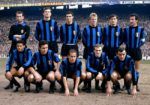Harry Redknapp, back from illness, made an important tactical change to come back from an early goal down to win 3-1 against West Bromwich Albion.
Spurs were without their two most creative central midfielders – with Luka Modric and Rafael van der Vaart both absent.
Spurs were without their two most creative central midfielders – with Luka Modric and Rafael van der Vaart both absent.
Redknapp has often played a 4-4-1-1 with van der Vaart in the support role for the lone front man, but he went with a 4-4-2 at The Hawthornes. Pacey (to put it mildly) wingers Bale and Lennon started, and were joined in midfield by Scott Parker and Sandro. Both central midfielders are capable footballers, but more known for their destructive abilities. This put a lot of the impetus for attacking down the flanks, and up front there was a classic big man/little man combo, with Adebayor and Defoe. Redknapp is more of a player motivator, coach, and astute transfer market buyer than a tactical innovator, and true to form here he sent out his team in a formation very familiar to followers of English football. The lightening quick wingers were backed-up by a pair of full backs who must be almost as quick themselves. I would reckon that any left back in the world would be asking his boss to provide extra support to him during a match where he found himself up against Aaron Lennon and Kyle Walker, and the same could be said on the other side of the pitch with Gareth Bale and Benoit Assou-Ekotto.
West Brom scored an early goal through Mulumbu, who found himself unmarked in the Spurs area and headed in from seven yards in just the tenth minute. There is often a sense that if a less favoured team scores the opening goal early on, it can be considered too early and allow the more fancied team to respond. This was certainly the case as Tottenham then ran in three past the Baggies. Redknapp asked his wingers to switch flanks regularly. As you can see form these heatmaps, Redknapp was able to take a bit of time to assess the situation, and made a tactical change without resorting to substitutions. Up until the 18th minute, Bale stays on the left, Lennon on the right. However, from the 18th-90th minute, they spend as much time on the opposite wings as they do on their own.
In comparison, WBA’s wingers and full backs didn’t switch flanks, and in fact found themselves pinned back. This was important for Spurs, as West Brom’s goal had come from a cross by right back Steven Reid in an advanced position. By mixing it up and keeping their opposite numbers occupied and, to be honest probably terrified, Spurs gained control of the wings and were able to impose themselves on the game.
It’s not just the players on the wings that gave Spurs that territorial advantage. Scott Parker and Sandro are deep-lying players, and by having those two helping out central defenders Kaboul and King, Redknapp was able to let his wide players push up and pressure West Brom’s own defence.
Morrison (in central midfield for the Baggies) is more advanced than Sandro who with Parker helps out defensively for Tottenham, this allows Bale and Assou-Ekotto, and Lennon and Walker to push up.
Written by Tom Nash of The Frustrated Footballer. you can follow Tom on twitter @ffootballer
Written by Tom Nash of The Frustrated Footballer. you can follow Tom on twitter @ffootballer
If you like our blog,then do vote for us here.













Recent Comments